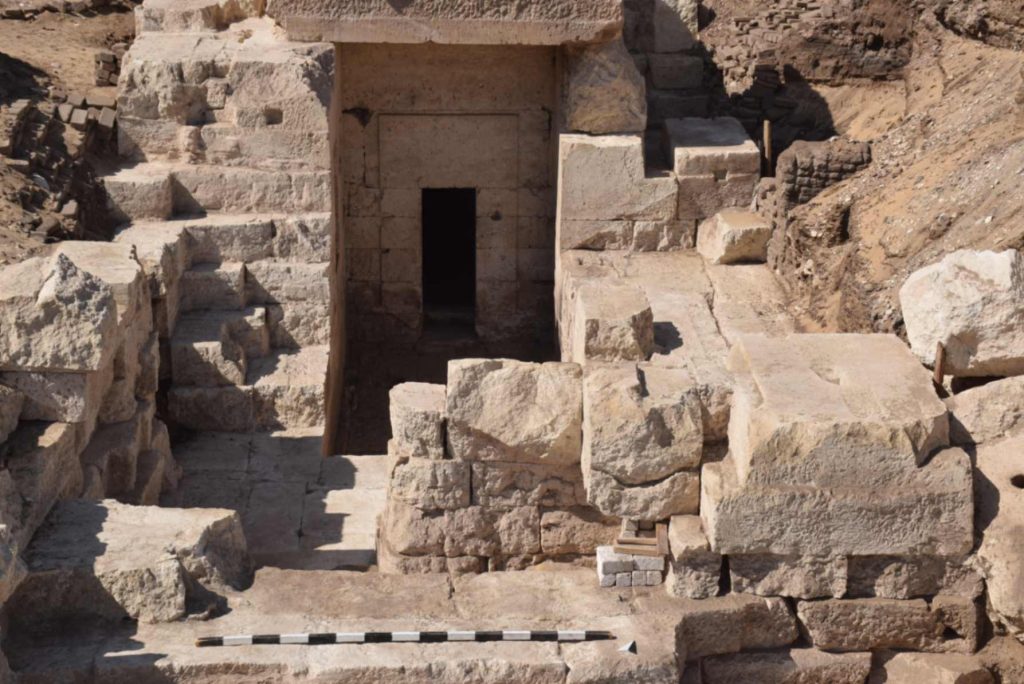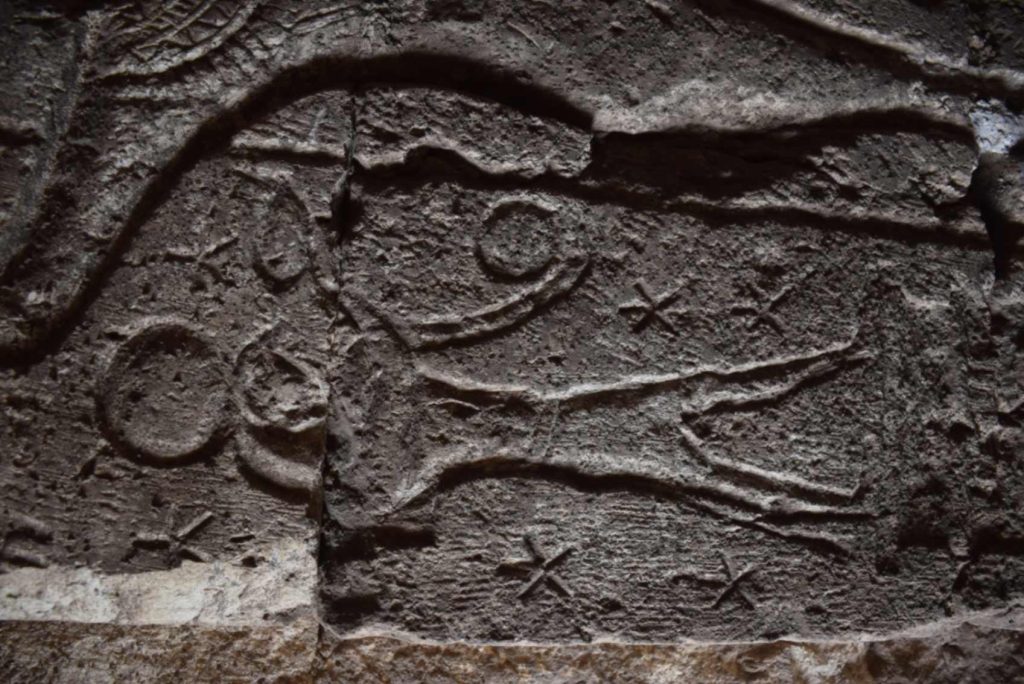Egyptologists suspect Ptolemaic temple, a cliff sanctuary in Athribis

Are the cliffs of Athribis hiding a former sanctuary? In the small Egyptian village near Sohag, around 200 kilometers north of Luxor, researchers from the University of Tübingen, supported by the Egyptian Ministry of Tourism and Antiquities, have uncovered a temple entrance indicating this may be the case. In what’s called the pylon, two towers flank a main entrance. According to project leader Professor Christian Leitz and excavation manager Marcus Müller from the Institute for Ancient Near Eastern Civilizations (IANES) at the University of Tübingen, the entrance to a temple in the rock is suspected to be under the still untouched piles of rubble behind it.
Since 2022, the researchers from Tübingen have been working with Mohamed Abdelbadia from the Egyptian Antiquities Authority and an Egyptian team in Athribis to uncover a large stone temple. Excavations have been taking place since 2012 to uncover a temple district from antiquity that was built between 144 BCE and 138 CE.
The complex was 51 meters wide in total and the towers of the monumental temple entrance were each 18 meters high. Today, only around five meters remain. The rest fell victim to quarrying. Thanks to a coin dropped, this removal of stone can be dated to the year 752 or shortly thereafter.
Over the past few months, excavations have been carried out in the northern tower and at the entrance gate, where the team found reliefs of a king offering sacrifices to the lion-headed goddess Repit and her son Kolanthes. Newly discovered hieroglyphic inscriptions show for the first time which king was responsible for the decoration and presumably also for the construction of the pylon: Ptolemy VIII from the 2nd century BCE.
In the north tower of the pylon, the team unexpectedly came across a previously unknown chamber. They cleared away a ceiling block weighing around 20 tons using an air cushion, wooden scaffolding and rollers. They uncovered the chamber, which is around six meters long and almost three meters wide. It was a storage room for temple utensils and was later used to store amphorae.

A corridor leads through the pylon to the chamber, so that it was also accessible from the outside. This entrance is also decorated with reliefs and hieroglyphs: Once again, the goddess Repit can be seen, while the door frame opposite shows the fertility god Min, who is accompanied by two very rarely depicted beings – decans (stars that enable time to be measured at night) with the heads of a falcon and an ibis respectively.
Unique in Egyptian temple architecture is a second door on the façade of the pylon, which leads to a previously unknown staircase that led in at least four flights to the upper floor, which has now been destroyed, and where further storage rooms can be reconstructed.

Further excavations from November 2024 will now focus on finding traces of the presumed temple behind the pylon.
“Finely smoothed limestone blocks on a vertically cut rock façade could belong to a rock sanctuary,”
says Christian Leitz. The more than four-meter-high find and decorations typical of the upper end of a temple – such as a cobra frieze – indicate that there could be a door behind it.
The excavation project on the pylon temple of Athribis is funded by the German Research Foundation.
Further information: The Athribis Project: https://uni-tuebingen.de/en/80785
Press release from the University of Tübingen



